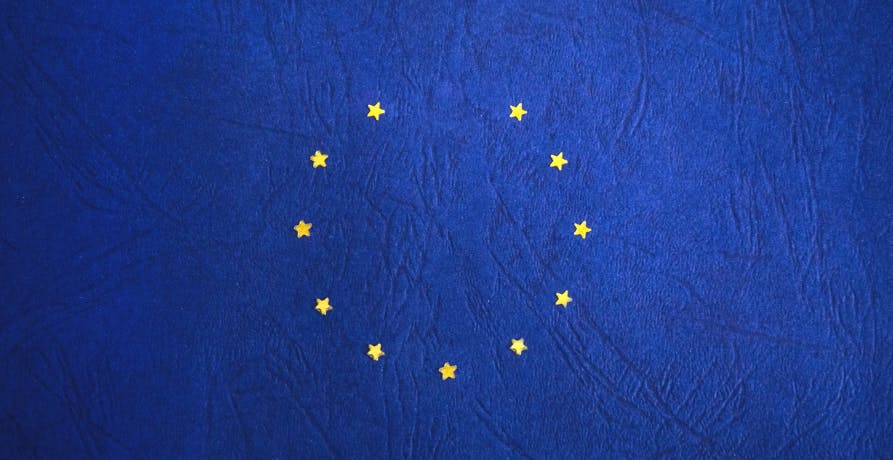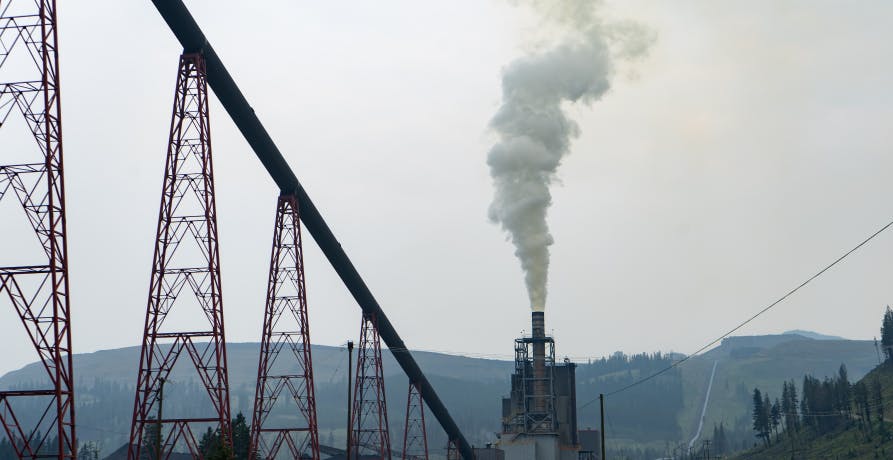
What are the 3 Pillars of Corporate Sustainability?
In this article, we'll explore what the 3 pillars of corporate responsibility are, why they're important, and how businesses can turn them into practical action.
ESG / CSR
Industries



The UK Emissions Trading Scheme (ETS) is one of the key policies enacted by the UK Government to address greenhouse gas emissions. The UK ETS replaces the UK’s participation in the EU Emissions Trading Scheme and came into effect in January 2021.
👉 What exactly is the UK Emissions Trading Scheme? Who does it affect and what does it require?
The UK Emissions Trading Scheme (ETS) is an emissions trading scheme which aims to reduce greenhouse gas emissions across the UK in line with the UK’s 2050 net zero commitment.
The UK Government sets a maximum level for total emissions, and every unit of emissions up to this level is part of a system of tradable allowances - this is known as the cap and trade approach.
The UK ETS has been in effect since 2021 and is part of the UK Government's legal obligation to achieve net zero emissions by 2050. Each year the cap allowance under the UK ETS is lowered, which means the cost of emissions goes up for businesses. This incentivises emissions cuts and investment in less polluting technologies.
The UK used to be part of the European Union's emissions trading system, which was created in 2005. The EU ETS is a cap and trade system that was created to reduce greenhouse gas emissions across the European Union. It covers approximately 45% of greenhouse gas emissions in the EU - mainly produced by the energy, power and aviation sectors.
When the UK left the EU it replaced the EU ETS with its own version of the trading scheme. The UK Emissions Trading Scheme which came into effect in January 2021 (though trading under the scheme didn’t start until May of 2021). The framework that governs the UK ETS is the Greenhouse Gas Emissions Trading Scheme Order 2020.
The UK ETS closely follows the EU ETS and is intended to provide continuity with how the EU ETS operated. Both use the same cap and trade scheme and apply to the most energy intensive industries, ie. the power generation sector and the aviation industry.
The most notable difference between the two schemes is that the UK has set a more ambitious emissions cap compared to that of the EU. The UK has set its emission cap 5% lower than its expected notional share of the EU ETS cap and the UK Government has committed to lowering the cap in line with its 2050 net zero ambitions.

In the cap and trade system the government sets a greenhouse gas emissions cap and releases a quantity of emissions allowances. Participants who fall under the remit of the UK Emissions Trading Scheme must obtain and surrender allowances for every ton of greenhouse gas they emit.
The trade aspect of the scheme allows participants to buy and sell their allowances and establishes a market emissions price. This incentivises companies to reduce their emissions, because not only do they avoid having to purchase surplus emissions allowances but it also means they can actually make money by selling their excess.
As we talked about before, the UK Government sets a cap on the total amount of greenhouse gases that can be emitted by those who fall under the remit of the UK ETS. These allowances represent a right to emit a certain amount of greenhouse gases.
Free allocation of emissions allowances are used to safeguard the competitiveness of the regulated industries and to avoid carbon leakage.
👉 Carbon leakage refers to the situation where a company relocates their production from a country with strict emissions standards to a country that is more lenient, thereby resulting in an increase in greenhouse gas emissions.
We’ve already talked about the cap and trade system that is central to the UK’s Emissions Trading Scheme, and how participants can buy and sell allowances. In practice this means that participants can emit one tonne of carbon dioxide (or its equivalent) per allowance. The cost of this allowance was initially set at £22 per tonne of CO2.
An important part of the UK’s Emissions Trading Scheme is the Cost Containment Mechanism (CCM), which allows the UK ETS Authority to step in if carbon prices stay inflated for a prolonged period, as this can penalise companies operating in heavy energy use sectors and risks damaging their competitiveness. It is triggered where the cost of allowances over three months in a row, is more than twice the price of the preceding two year reference period. If triggered, it’s up to the UK ETS Authority to decide what intervention is necessary (if any).
The UK Emissions Trading Scheme applies to energy intensive industries, the power sector and aviation. In-scope activities are listed in Schedule 1 (aviation) and Schedule 2 (installations) of the Greenhouse Gas Emissions Trading Scheme Order 2020.
❓What is an installation? An installation is a stationary technical unit where one or more of the activities that fall under the scope of the Emissions Trading Scheme are carried out, as well as any directly connected activities on the same site which also have a technical connection to any of the activities covered by the Emissions Trading Scheme.
The flight routes covered by the UK ETS include UK domestic flights, flights between the UK and Gibraltar, and flights travelling from the UK and arriving in the European Economic Area, provided the flight is operated by an all included aircraft operator. It should be noted however that there are exemptions to this, full details of which can be found in the UK Emissions Trading Scheme for Aviation: how to comply Guidance

Schedule 2 of the UK ETS states that it covers regulated activities that produce greenhouse gas emissions, such as the combustion of fossil fuels in installations which exceed a set threshold. This threshold is combustion units with a total rated thermal input exceeding 20MW (megawatts).
The Greenhouse Gas Emissions Trading Scheme Order 2020 contains simplified provisions for hospitals and installations with emissions lower than 25,000 tonnes of CO2e (carbon dioxide equivalent) per annum, or where the installation carrying out the combustion has rated thermal capacity below 35MW. Such installations are instead subject to emissions targets.
Installations with less than 2,500 tonnes of COe per annum are considered to be ultra small emitters and are only required to monitor their emissions.
If an organisation carries out an activity covered by the UK Emissions Trading Scheme, they must hold a relevant permit. In the case of installations this will be either a greenhouse gas emissions permit, or hospital or small emitter permit. In the case of aircraft operators this is an emissions monitoring plan. Permits and emissions monitoring plans are issued by the UK ETS Regulators.
Aircraft operators are guided by the UK Emissions Trading Scheme for Aviation: how to comply Guidance. The guidance details that there are 4 regulators for aircraft operators regulated under the UK ETS. Aircraft operators are assigned a regulator based on the location of their registered office or place of residence. The regulators are responsible for setting up the aircraft operators account within the application and reporting system (ETSWAP - otherwise known as the Emissions Trading System Workflow Automation Program).
Operators of installations covered by the UK ETS receive permits and submit reports through ETSAP directly.

❗️Failure to comply with obligations under the Greenhouse Gas Trading Scheme Order 2020 may lead to significant civil penalties.
👉The ETSWAP system is going to be replaced in 2023 by a new digital permitting, monitoring, reporting and verification (PMRV) system. Exact dates of its launch are not yet confirmed.
Similar to the EU ETS, the UK ETS has also been split into different phases. The first phase started in 2021 and will end in 2030. There will be two complete reviews of the scheme within this first phase - the first review will be carried out in 2023, and the second will be carried out in 2028.
2023 marks the start of the first review period, where the whole emissions trading scheme will be reviewed, with any necessary changes to design features to be implemented by 2026.
The UK Emissions Trading Scheme, while still relatively new, has been given enough time to settle and mature. The review of the UK ETS, due to start in 2023, will give the UK Government a chance to consider how it can improve the system, to help it reach its commitment to reach net zero emissions by 2050. As part of this review process the UK Government is committed to consulting on the cap set by the UK Emissions Trading Scheme to ensure that it facilitates the achievement of this target. This will also include a review of the allocation of free allowances to ensure that a balance is maintained between carbon leakage and incentivising decarbonisation.
As we look to the future of the UK Emissions Trading scheme we can also expect the UK Government to consult on the possibility of expanding the UK Emissions Trading Scheme to cover a greater spectrum of emissions that are not currently covered.
There has also been debate over the possibility of international cooperation on carbon pricing. There’s an ever increasing number of counties with carbon pricing instruments and emissions trading schemes and cooperation in this area will help tackle the risk of carbon leakage. The linking of emissions trading schemes, which means that emissions allowances can be used for compliance across borders, can support carbon pricing cooperation. In fact the UK Government has signalled that it remains open to (in principle) linking the UK ETS with other international emissions trading schemes.
The UK is legally obliged to implement a plan of action in order to reach its net zero emissions target in 2050 and the ETS is part of this wider strategy. Future amendments are likely to increase the scope and effectiveness of the scheme, and the reducing allowances will encourage businesses to take action to reduce their emissions.

At Greenly we can help you to assess your company’s carbon footprint, and then give you the tools you need to cut down on emissions. Why not request a free demo with one of our experts - no obligation or commitment required.
If you enjoyed this article, check out our legislation tracker to discover what frameworks, regulations and guidelines apply to your business and industry.